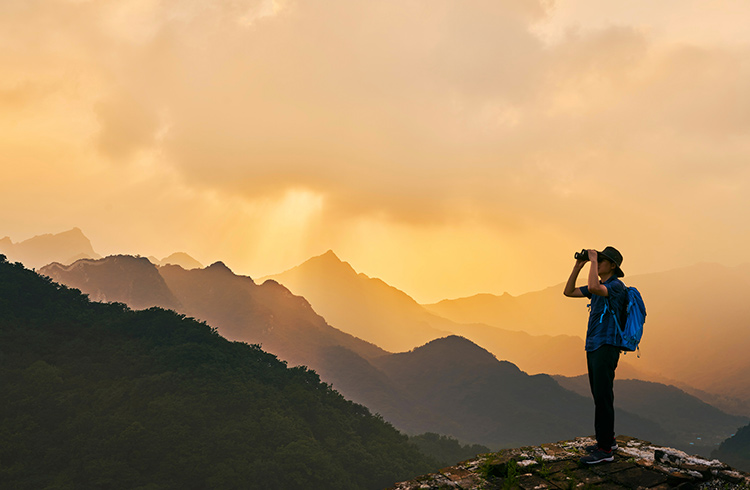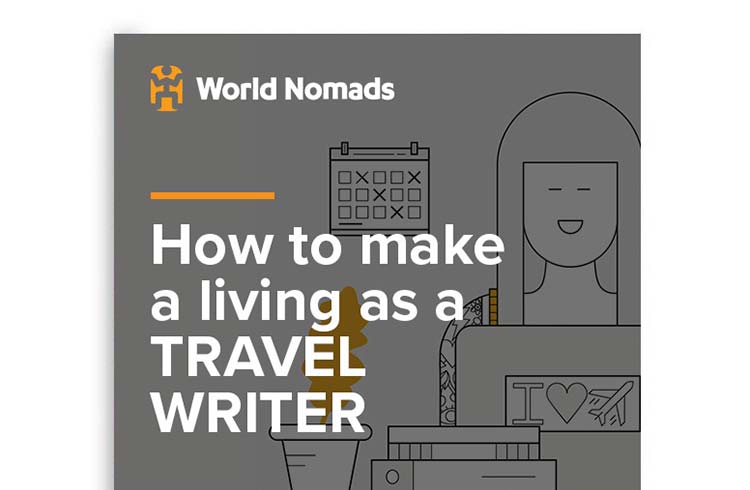Freelance travel writing is a whole lot easier when you can pitch and deliver articles editors actually want, advises NY Times writer Tim Neville.
 Photo © Getty Images / Yifan Li / EyeEm
Photo © Getty Images / Yifan Li / EyeEm
Knowing what to pitch, how, and when is key to your success. Let’s say you’re traveling through Italy when you stumble upon the best bakery you’ve ever been to. The place is truly exceptional, not just for the flaky, unusual pastries on offer but for the baker himself. He’s a filmmaker working on a documentary about his family, who’s lived in the apartment upstairs for 150 years. Pretty cool, right? Good story. But is this really what an editor is looking for?
- Fresh content
- Developing ideas
- Adding layers
- From first draft to finished
- Download our How to Make a Living as a Travel Writer guide
Fresh content
Many new travel writers make the mistake of confusing an idea with a story. Knowing that distinction will mean the difference between a $50 hit, if anything at all, and a $1,500 feature. We see this mix-up play out all the time in the essays for the Travel Writing Scholarship program. The writer meets someone, they go somewhere, they do something but then that’s it. The piece ends up feeling more like a personal diary entry than sellable travel writing.
Make no mistake. That’s really what you’re going for here. To make a living writing you need to sell the stories that editors want, plain and simple, and that means knowing how to think like they do. This does not mean you should pitch “click bait” but rather stories with “purpose”.
Almost every magazine, newspaper and website that publishes travel stories exists for one reason and that is to keep an audience. They do that by informing or entertaining and no publication can do either with stale, boring material. It sounds obvious but editors need fresh content.
Developing ideas
The baker guy idea may or may not achieve that purpose. He may never have been written about before in any other outlet, but the story itself – a multi-talented person doing multiple cool things – isn’t super compelling on its own. But if what he’s doing is new, includes a superlative in some way, or has some timely aspect, then maybe you have a shot at taking it beyond just an idea.
In short, ideas are topics you find interesting or fun that don’t really go beyond a simple statement. “Food” is an idea. “Running with the bulls” is an idea. “I want to go to India” is also just an idea. You will never sell ideas. Stories in their truest sense go beyond this to introduce quests and conflicts and characters, but even smaller service pieces must go further. As Aaron Sorkin, the Hollywood screenwriter puts it, you don’t have a story until you can lay out your idea and then say “but” or “and then”. This applies to simple service pieces, too
Adding layers
To sell articles as a complete beginner, you may first want to look for your “buts” and “and thens” in service ideas that involve the freshest of fresh content: things or events that are new. But don’t stop there. Think: what does this new thing happening really do? Does it grant better access to a place? And beyond just “new”, can I add a superlative (best, least, only) or a time hook (why should we write about this now)?
For example, a new hotel is an idea. A new hotel opening up in March adds a time layer. A new hotel in March in one of the best stretches of the North American coast to watch whales adds a superlative. Six new hotels opening up in March in some of the best areas around the world to watch big mammals migrate gives your idea a bigger, more global appeal. That’s the story you should pitch. You may only come across one of those hotels at first but go after the bigger sell by finding more examples that would appeal to a publication’s audience.
Baker guy begins to go from idea to story, but it needs that extra layer of complexity to push it over the edge. It could be part of a simple service piece on the best bakeries in Rome if you can pack enough superlatives and timeliness around it. To be a bigger feature story, like the one you’re probably hoping to do, you’d need to look for those elements, too, but then you’d add in a bigger picture that gives the story a meatier feel. Pitch an editor a story about how in Italy bakeries are disappearing at an alarming rate and how there’s this one guy out there trying to save the industry and you’re already thinking like a pro.
Be nimble and willing to recast your ideas into the form that works. And remember, if a hotel is opening in March, magazines will want to hear about it no later than October or November. Websites, of course, don’t require such big lead times but get it on their radar early.
From first draft to finished
Rewriting is part of the process. Think for a moment about those big, narrative travel articles you see in glossy magazines or on the cover of the travel section in a national newspaper. It’s possible, but doubtful, that those finished versions look exactly like the version the writer sent in.
Commonly, editors take a writer’s draft, read it over and over and then go back asking for new details. They’ll cut certain scenes and ask you to add others, all while minding your word count. The rewriting process can feel like a blow to your ego but it’s not. This is where an article goes from passable to award-winning. It’s where you go from a smart amateur to a real pro.
Publications with fast turnaround times, like websites and newspapers, may not have the staff to work one-on-one with you on your precious article but you should still always ask to see the edit before it goes live or to press.
Have your fact-check report ready to go and plug in any changes. Making a stink over what stays in and what your editor says should go is risky but discussing it isn’t. Normally you won’t be asked to do more than one major rewrite, though it does happen. Take the task seriously. If an editor can’t get your story into shape, she might just kill it.
Download our How to Make a Living as a Travel Writer guide

Related articles
Simple and flexible travel insurance
You can buy at home or while traveling, and claim online from anywhere in the world. With 150+ adventure activities covered and 24/7 emergency assistance.
Get a quote


No Comments